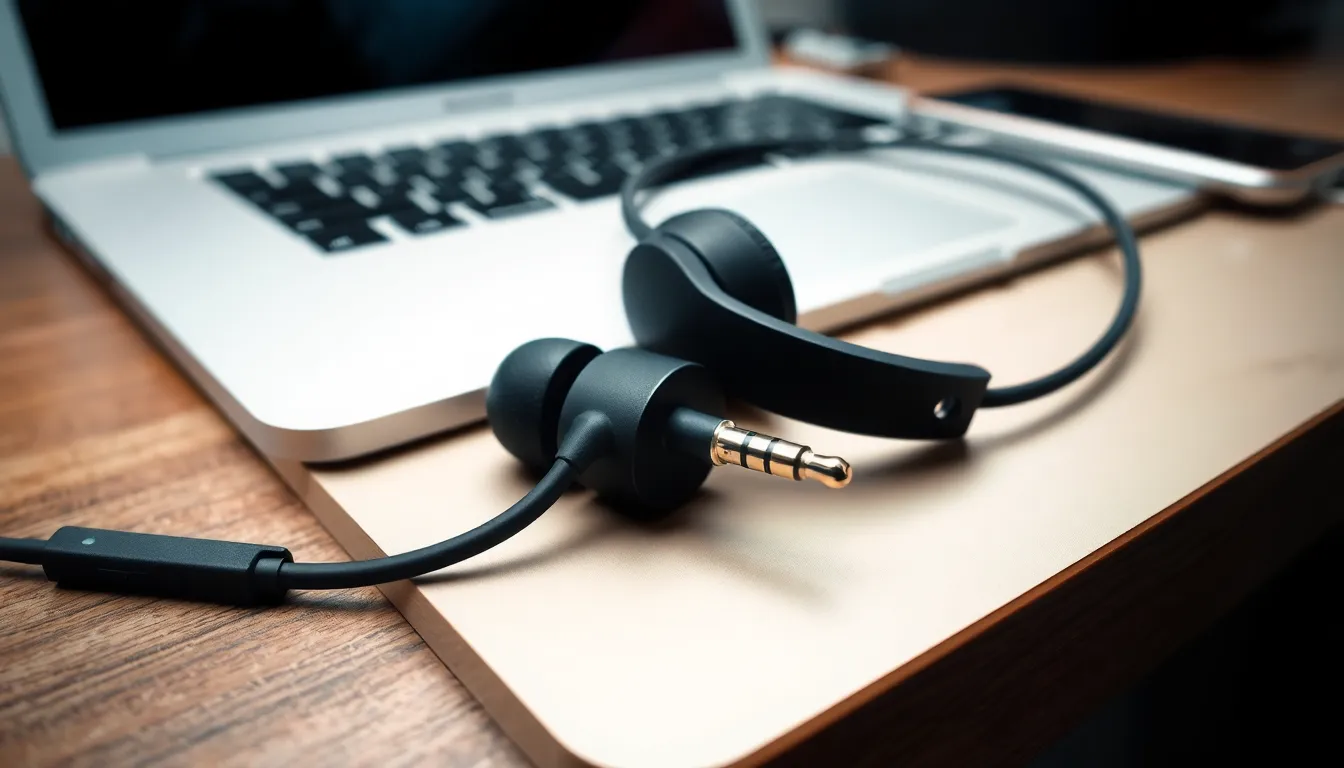In a world where communication is key, nothing’s more frustrating than realizing your fancy new headset doesn’t play nice with your devices. It’s like trying to fit a square peg in a round hole—awkward and a little embarrassing. Whether it’s for gaming, music, or those endless Zoom calls, understanding headset compatibility can save anyone from a tech-induced meltdown.
Table of Contents
ToggleUnderstanding Headset Compatibility
Headset compatibility plays a vital role in ensuring seamless functionality across various devices. Compatibility determines whether a headset can connect and operate effectively with specific hardware such as computers, consoles, and smartphones.
Definition of Headset Compatibility
Headset compatibility refers to the ability of a headset to function correctly with a device. Various factors, including the type of connection, impedance, and audio standards, contribute to this compatibility. Connections range from wired options like 3.5mm jacks and USB ports to wireless configurations, such as Bluetooth and proprietary connections. Each device may support different audio standards, impacting sound quality and features.
Importance of Compatibility in Headsets
Compatibility in headsets significantly enhances user experience in gaming, music, and communication. Different headsets provide varied features, including noise cancellation, surround sound, and microphone quality. Users encounter frustrations when headsets fail to connect properly, leading to disrupted audio or functionality. Ensuring compatibility helps users avoid potential setbacks, streamlining setup processes, and improving overall satisfaction with audio equipment. Compatibility guarantees that users can fully utilize headset functionalities, maximizing entertainment and productivity across all devices.
Types of Headsets

Understanding the types of headsets available is essential for choosing the right one based on device compatibility. Two primary headset types exist: wired and wireless.
Wired Headsets
Wired headsets connect directly to devices using a cable. Users often find these headsets reliable for consistent audio quality. Many models utilize a 3.5mm jack, making them compatible with smartphones, computers, and gaming consoles. Often, wired headsets provide enhanced sound isolation due to their secure connection. They typically come with features like built-in microphones for clear voice communication. Impedance ratings, usually ranging from 32 to 64 ohms, influence their performance with different devices, affecting sound quality and volume levels.
Wireless Headsets
Wireless headsets offer flexibility and convenience due to the absence of cables. Bluetooth technology commonly powers these headsets, allowing seamless connections to smartphones, tablets, and PCs. Battery life often ranges from 10 to 30 hours, depending on usage. Many wireless models feature noise-canceling capabilities, enhancing audio experiences in noisy environments. Pairing wireless headsets typically involves simple connection processes, making them user-friendly. Manufacturers often design these headsets with portability in mind, appealing to users on the go.
Factors Affecting Headset Compatibility
Several key factors determine headset compatibility across devices, impacting user experience and audio performance.
Device Compatibility
Device compatibility plays a crucial role in determining whether a headset functions effectively. Different devices such as computers, consoles, and smartphones use various connection types like USB, audio jacks, or Bluetooth. A headset designed for one type of connection may not work properly with another. Understanding connector types helps users make informed choices, ensuring seamless integration with their preferred devices. For instance, a wired headset requires a compatible audio jack, while a wireless headset needs Bluetooth capability.
Operating System Considerations
Operating system considerations also affect headset compatibility. Different systems, such as Windows, macOS, Android, or iOS, may have various audio standards. Compatibility varies significantly among operating systems, requiring users to check if their headsets support specific audio protocols. Drivers and software updates may enhance compatibility, improving overall performance. It’s important to verify headset specifications against the intended operating system for optimal functionality.
Sound Quality and Performance
Sound quality and performance impact the overall headset experience. Impedance ratings influence how headsets interact with devices, affecting volume levels and audio clarity. Certain headsets excel in producing immersive audio through features like surround sound and noise cancellation. Users seeking premium audio should consider headsets designed for high-performance environments, ensuring they align with their devices’ capabilities. Checking specifications against audio requirements can lead to a more satisfying listening experience.
Common Issues with Headset Compatibility
Headset compatibility can lead to several common issues users may encounter. Understanding these issues helps enhance the overall audio experience.
Connectivity Problems
Connectivity problems often arise due to mismatched connection types. USB and audio jacks vary across devices, affecting headset functionality. For example, a wired headset may not connect properly to a device only supporting USB-C. Wireless headsets rely on Bluetooth, which can introduce latency or disconnection if not paired correctly. Users should ensure their devices support the appropriate connection type. Compatibility with different Bluetooth versions can also impact connectivity, particularly with older devices. In cases where users experience connection difficulties, checking for software updates can resolve compatibility issues.
Audio Quality Issues
Audio quality issues can stem from impedance mismatches. Different headsets feature varying impedance ratings, which can affect sound clarity and volume output. Low impedance headsets often produce louder sound without requiring significant power, while high impedance models may deliver superior audio quality when paired with compatible devices. Sound distortions may occur if the headset does not match the device specifications. Additional factors like environmental noise, audio formats, and the device’s audio processor influence the overall listening experience. Users desiring premium audio must prioritize headsets specifically designed for high-performance environments.
Headset compatibility is essential for maximizing audio experiences across various devices. By understanding connection types and specifications users can avoid frustrating technical issues. Whether opting for wired or wireless options ensuring compatibility with devices and operating systems leads to seamless functionality.
Investing time in researching headsets tailored for specific needs not only enhances sound quality but also guarantees a more enjoyable listening experience. Users should prioritize compatibility to unlock the full potential of their audio equipment and enjoy uninterrupted enjoyment whether gaming, listening to music, or participating in virtual meetings.

